#No people were harmed in the creation of these images! Most of these are art pieces!
Explore tagged Tumblr posts
Text
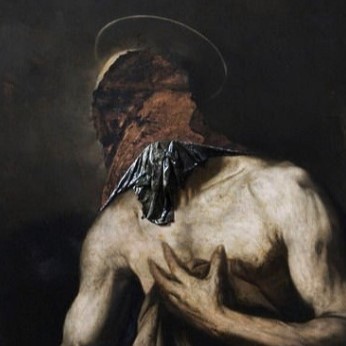
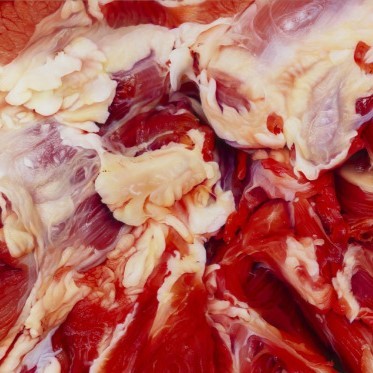
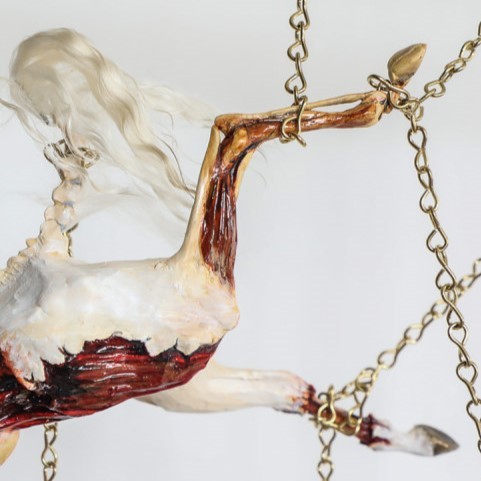
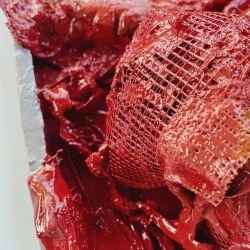

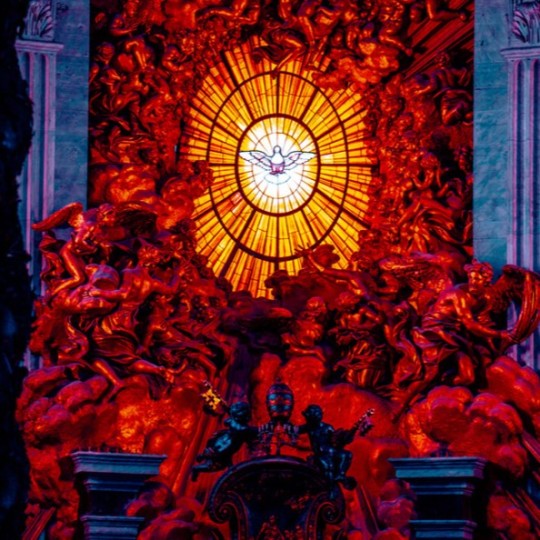

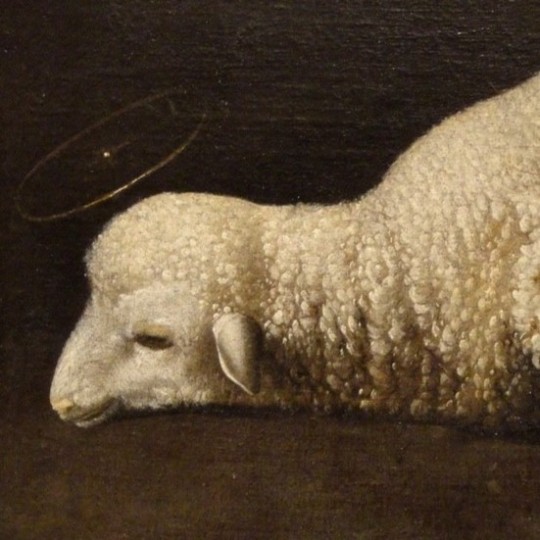

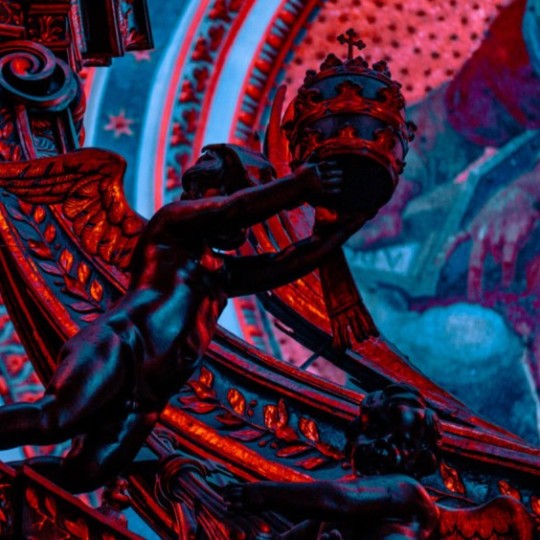
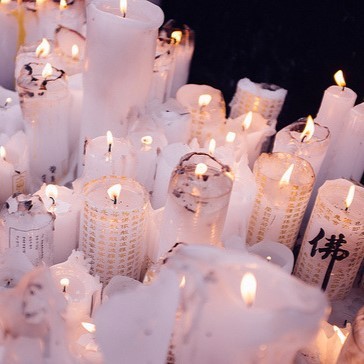
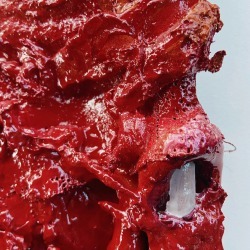
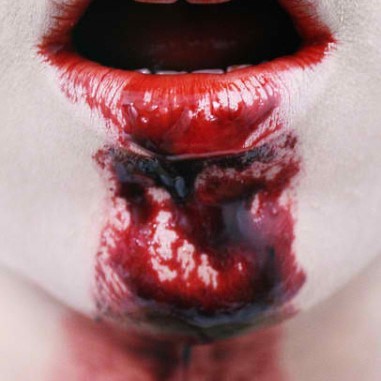
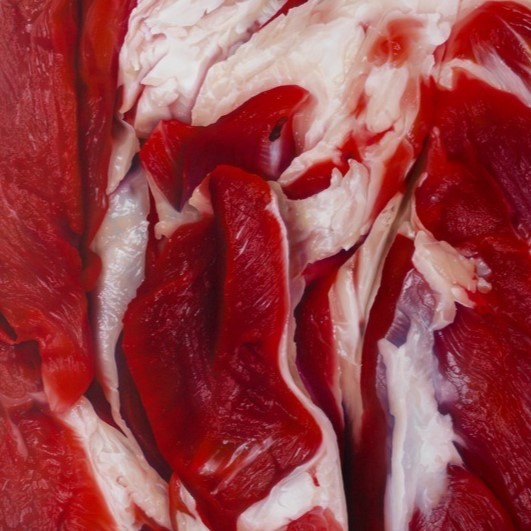
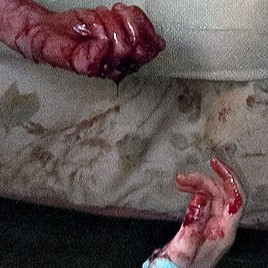
✧・゚:* — MOODBOARD FOR ORIN THE RED [BG3]
Including: No particular imagery.
#🔮— by my gifted hands.#moodboard#kin moodboard#kinblog#kin blog#kin request#kincare#kin care#dnd kin#fantasy kin#kin aesthetic#orin the red kin#bg3 orin kin#orin bg3 kin#fictionkin#bg3 kin#bg3kin#blood#gore#fire#No people were harmed in the creation of these images! Most of these are art pieces!
17 notes
·
View notes
Note
I love your animatronic toy OC guys so much, they have so much personality to them and their colours are really good (especially umbra)
Thank you! The funny thing about Umbra's design was that while I was developing it about two years ago and had some colors in mind, I described in text what I already came up with to an image generator for fun (shitty unconvincing old kind, vs now where it looks like shit but in a somewhat more convincing way) and it produced something so silly that I made her design better than what I would've settled with out of spite.
More details of my process and anti-AI ranting below the cut, so the examples given won't show up on search results. Google Images is getting polluted too much with slop to begin with.
Let's begin.
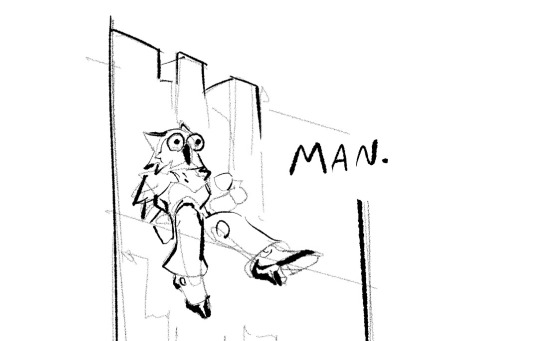
In 2022 I was drafting up Umbra's design with mostly concrete details. At this time image generators were newer and much less convincing, and I was a bit less aware of just how unethical they were, so I fed one a text description of what I had drafted for her design out of curiosity. Something along the lines of, "doll of an anthropomorphic owl librarian in glasses, blazer/suit jacket, skirt, corset, high heels, sitting on a bookshelf" and probably a few more terms. Really specific, lengthy prompt.
I try to be open-minded and give new things a shot, but the results were Not Great. Ideally, I'd want to not share the AI pictures at all on-principle, but I feel like it's useful, transparent, and necessary to show them. Both as a means of not hiding anything, but also just to appreciate where the design is at in spite of it.
Outside of this particular collage of Weird Owls, no other pictures on this blog are AI-generated. AI Image Generation is harmful, and I am against its usage.
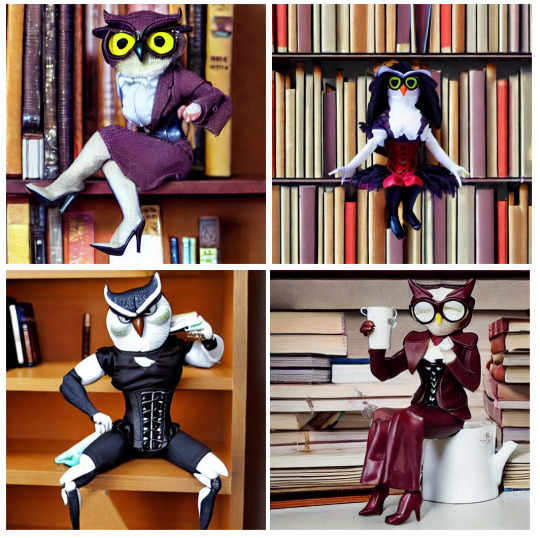
But hey, two of the generated pictures look close, right? The top left is the closest, and bottom right is second.
That's because they started out worse, and I had to actually erase chunks of them and have the generator fill in the blanks to get anything remotely close to what I wanted. Misshapen limbs, unrecognizable anatomy, fever-dream clothing details, etc. They didn't even have a corset or proper legs until I slapped the generator in the face enough times to make it produce them. I was just using it to photobash, which was such an annoying process, I just went "this is dumb" and stopped. They're literally posed like that because I kept erasing and regnerating their limbs until they looked vaguely in-character. It literally only looks passable thanks to STRANGLING it with human input.
Before I used the image generator, I already drafted her to be night-themed with yellow eyes and something like purple, dark blue, or sky-blue as her main color; the generator making one owl yellow-eyed and purple was a happy coincidence, and the only thing the generative AI "came up with" that I didn't already have in mind or included in the prompt was the light blue shirt, which I did adapt into her cyan shirt and stockings/socks as well. That was a good call. You get One Point, Mr. AI.
...Which still meant that at its absolute best, it was a largely redundant step in the creative process if its contribution was worse than what a randomized palette generator or character creator could come up with.
That's already putting the ethics of it aside, like carbon emissions, data pollution, using artists' and photographers' work without credit or permission, the incentive to plagiarize, flooding sites like deviantart with slop, Willy Wonka Shit, etc etc etc. When people say "you can use AI as a tool though", this ordeal was enough to convince me that it's more trouble than its worth, even in its most ethical usage. I feel gross for having even tried. I wish I knew what sources went into the creation of those Weird Owls. It'd be better for research if the right people could be credited.
Nothing else on this blog is AI-generated or ever will be. The art below is purely my own (2022 vs a few weeks ago)):


Actually drawing Umbra and solidifying her design was far more rewarding than having an image generator vaguely approximate my own ideas. I wanted her to look really special, so I used a black cape and pants, gold highlights and buttons, and blue undertones to make something more distinct. Also, neck floof. Very important. I wanted the head in particular to look distinct and original, going with bold black streaks to really help her look distinguished.
I also have certain inevitable Hydroisms for Fancy characters like her; most apparent in these designs for Chasey and Kaita from even longer ago, which were more of an influence than anything else. (Old art of mine from like 2021, Kaita ref looks wonky but Chasey still holds up nicely):
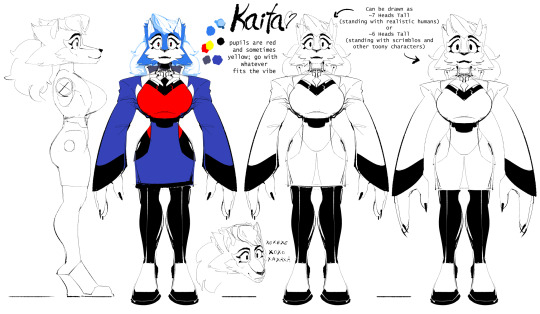

Most of Umbra's other design elements were already commonly used with established ocs like Kaita, like her shape language, corset, skirt, heels, etc. It was my previous work with Chasey that inspired the use of gold buttons and highlights.
Umbra is also now a bluer shade of purple partly to distance the current design from that ordeal. All things considered, I'll probably make her more indigo next time. I already wanted her to have a wide color range from the get-go (Featured below is, again, purely my art from 2022:)
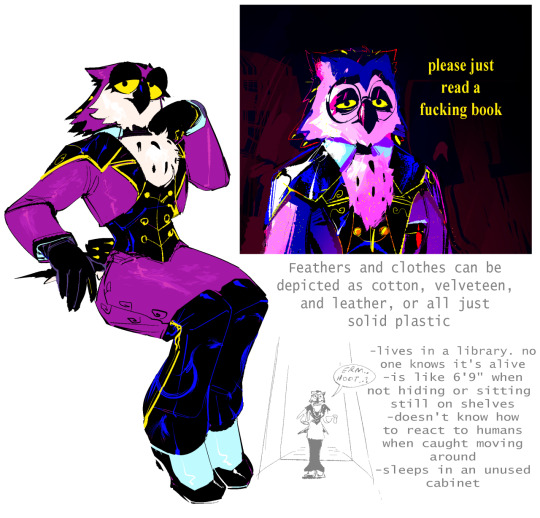
I may use a different colored shirt and stockings in the future. I like to think she has many different shirts and clothes based on the different stages of the night sky, from dusk to dawn, and the painting I made in the top right there was an exploration of her range in different lighting.
All in all, it's frustrating. I'm proud of her design, but explaining all of this is annoying, because it's technically all relevant to showing how her colors were picked and how the design was made. I still technically have AI to """Thank""", in the way you thank a bad experience for encouraging you to make things better out of spite.
112 notes
·
View notes
Text
Upcoming Auror! Sebastian Sallow x Auror! Reader Fic Details <3
Hi guys! As some of you may know, I'll be doing a Seb Auror Fic soon which will be based in the Philippines <3. Since there's no wizarding lore yet in the PH, i've decided to set the setting first before moving w the story. Here are the details below!!
MOODBOARD
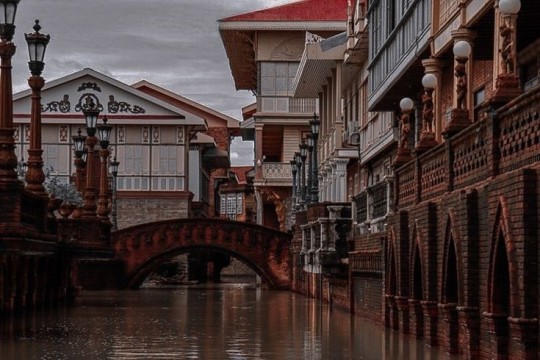
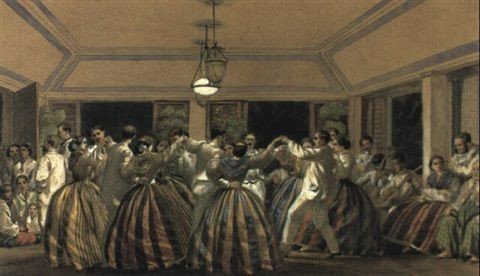


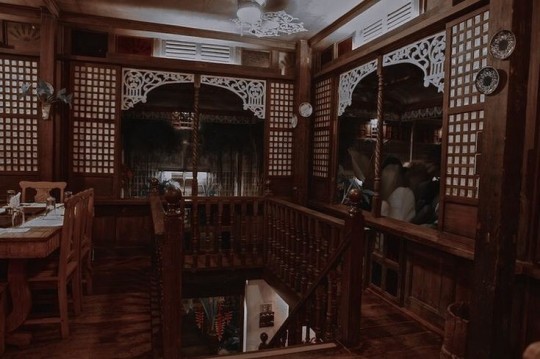
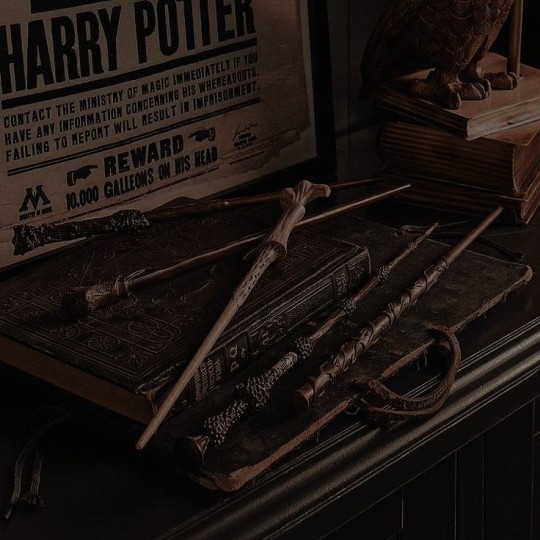


Setting:
Mid-1800s, Philippines.
Hogwarts Legacy Setting will be adjusted slightly before the events of the fiction. (At this point I suggest just not getting into it too much im getting confused as well lmfao)
Details:
(About the Filipino Wizarding Community)
Philippine Magic has deep roots in the dark arts. Wizards and Witches back then often used and were masters in the arts of dark magic. It was often a misconception that the dark arts were inherently evil and while it did hold some truth to it, it all depends on how it's used. Filipino Wizards and Witches value the proper use of dark magic to use it to help people rather than harm them. However due to the misuse of said magic because of its great power, there is then a rise of magic users who seem to use it for personal gain. So these Wizards and Witches adapted their form of dark arts into the magic that can help combat sinister magic. This evolved into healing magic which is the main core of Filipino wizardry.
Marahuyo en Mahika Akademya | Philippine School of Wizardry

(place of reference: University of Santo Tomas)
A school formed to preserve the ancestral magic and history of Filipino Wizardry, Marahuyo en Mahika Akademya is a School of Magic for Wizards and Witches in the Philippines. Founded by Maria Ana Flordeliza Santos, she opened the gates to magic users so that they may expand their knowledge, academic prowess, and capabilities in the field of magic. The school's patron deity is Bathala, the god of creation and the being who granted mahika to the people.
The process of acceptance is quite peculiar. At the young age of 11 is when young wizards and witches will be doing a sacred ritual also known as Pagtawas. While the ritual is used to detect supernatural illnesses, it also detects magical traces within the person. It is a form of healing and a sacred ritual to determine one's fate. A piece of the person's hair will be burned on a special type of candle and then its wax will be poured into a basin. If the wax produces an image or a form according to the person's true self (some form a type of animal or plant) then the person does indeed have magic. If nothing happens, there is no magic within them. From then on, their parents will be responsible for the basic magic curriculum. At the age of 15, they will then be brought to the Akademya by carriages driven by the Tikbalang tribe. They have 5 years of magical curriculum to learn during their stay there. There are three houses to be sorted in Marahuyo en Mahika;
Mayari
known for their bravery, strength, determination, ability to excel in their most desired fields and leadership. They are categorized as the warriors.
Colors: Navy Blue and Beige
Hanan
known for their optimism in the unknown, courage in taking risks, perseverance amidst challenges, and an open perspective in life. They are categorized as the pillars.
Colors: Gold and Bronze
Tala
known for their willingness in helping others, their need for knowledge, vast creativity, and wisdom. They are categorized as the shepherds.
Colors: Cyan and Silver
Philippine Bureau of Magic and Wizardry (aka PhilMaj)

(place of reference: Las Casas Filipinas De Acuzar)
The official governing office of the Philippine Wizarding Community. Inspired by Britain and America's Ministries of Magic, the PhilMaj was to be open not only to the PhilMaj community but to wizards all over the world thus the name in English. Founded by the 5 great Maharlikas (aka Aurors), the organization was created to protect the Filipino Wizarding Community from outside threats which includes 'SeroMahi' (Sero (Zero), Mahika (Magic) or the Muggles basically).
The PhilMaj exists independently and separates themselves from their seromahi counterparts as they see seromahis as a threat to their existence if they are to be found. With the Philippines experiencing a great force of oppression from outsiders, PhilMaj has done its best to stay hidden and away from its affairs (they are specifically known to hide too well that they have not encountered any type of exposure to the seromahi community. They, unfortunately, have strict rules regarding wizard —seromahi relationships and usually wizards or witches with mixed bloodlines take long processes to enter PhilMaj. MaraMahika (school) is an exception as it accepts all magic users despite their blood lineage).
Aurors also known as Maharlikas are divided in Divisions. Division I is for investigation, Division II is for order and Division III is social relations.
PhilMaj has different departments to tend to concerns.
Department of Magical Law Enforcement
Department of Protection of Magical Tribes and Folk
Department of Control and Care for Magical Creatures
Department of International Social Relations
Department of Magical Education
Department of Magical Businesses and Endeavors
Department of Magical Transportation and Building
Department of Recruitment and Referrals of Wizards and Witches
Department of Mysteries
Current location of PhilMaj is in Manila, Philippines. (Guarded by the Siyokoy Tribe in the waters of Manila Bay, the waters open like a door as it parts the way underground where the PhilMaj Headquarters reside)
____________________________________________
A/N: i have a shit ton of details in my notes but im sharing the general lore or idea of the magic world in the philippines. this counts as a teaser as well 😎 lmk if i've miswritten something or if some things dont line up. you guys can add ideas as well and ill add them in my notes hehe (if you wish to be included in this fic's taglist, reply to this post or any of my posts regarding this fic ty !!)
#arthenaa#hogwarts legacy#sebastian sallow#hogwarts legacy x reader#sebastian sallow x reader#arthenaa auror seb fic#teaser
122 notes
·
View notes
Text
They had left the place gratefully, ready to part with such a turbulent and harmful chapter of their life. Though the memories of the spiky words and baseless arguments from those who claimed to be family would cling to them like a perpetual fog, they could leave behind the physical reminders and try to start something new.
It wasn't easy to be living alone in such times, but they managed to find a kind employer who paid well enough for them to afford a place to stay and food to stave off their hunger. Once things had settled down they found that, nourished by safety and contentment, a seed of ambition had finally begun to blossom within them. So in the darkest and richest pockets of night, they allowed their journey- a life once so pained and stifled which had grown into something joyful and free- to flow from mind to quill to blissfully vast parchment.
They created wild images of who they had become, emotions displayed in abstract spirals and faces and carefully patterned bursts. They had never seen art like it; a bouquet of stories and feelings! They signed it with their true name, not the one they had left with the false faces and pressures to hide. They had become exactly who they were meant to be.
But their perfect joy and creation did not last. They did not know how, but someone who lived nearby came to know of who they had left behind. Of who they were running from. The disgust of one man gave birth to a mob of similarly poisoned minds. The anger of blind evil came knocking at their door, then the knocking turned to the pounding of wood and breaking of glass.
"We know what you are," he snarled, and the flames were thrown into their home, landing upon scattered papers on the floor.
They watched, helpless to stop the consumption of everything they had become. Smoke and cruel laughter made a home in their lungs as they watched their art, their one last love letter to the world and their place in it, blacken and curl under the weight of hatred.
---------
Xe was bored at the family gathering. Mostly xe was terrified to be in a conversation with some certain people, and had escaped to the eternally dusty basement of the old matriarch's home. Xe had heard countless times about the move overseas, how many of these mildew-smelling objects were actually relics of the past that collectors would be itching to get their hands on.
It wasn't that interesting, really. How could any of these stories mean anything to xyr?
Xe picked up a leather-bound journal. The cover felt worn and well-loved in xyr hands. Xe slowly opened it to reveal the first page, yellowed and smelling of age and wilted flowers. It read, "Property of-" the name was cut off and angrily scribbled out. Xe raised xyr eyebrow. Maybe something was of interest to xyr...
And then half an hour flew by among the weathered pages. Xe saw so much of xyrself in the words, carefully carved to detail deep pain. Xyr ancestor had felt the same isolation and carried the same guilt. Xe gasped when xe came across the most powerful paragraph:
I shall put aside my own shame in favor of the truth within me. Mother had always described souls as little gardens that must be tended. I know now that what she would view as weeds are the most beautiful wildflowers I harbour, and I have a deep desire to tend them instead of uproot them in favour of the world's artificial colours. I will find a place to keep my lovely garden, and I shall happily water them as the person I know myself to be.
Written beneath the declaration was an indulgent cursive scrawl. Xe whispered to the stale darkness:
"Amaranth."
Amaranth gasped. So it was finally here.
They had never known why they lived on in legacy after their home and art had been burned. Their false name had died without triumph on the lips of their family, who had decided to cease talking of them. That was just fine by Amaranth; they would rather be forgotten completely than be remembered as a lie and a disgrace.
But they had forgotten about the journal they had kept in their frustrated youth. They had hoped it would not survive, but a generation or two after their death, the relic had been packed up with all the rest and shipped off to a new continent. It had been left to rot among all the other clutter of disintegrating tales.
Amaranth was so thrilled to see that their story had landed not in the hands of the same misunderstanding and disgust that had killed them; instead, they had found their way to a kindred spirit.
"Amaranth," xe murmured once more, feeling the weight and cadence of the word on xyr tongue. It had such a lovely sound, and such an incredible story behind it.
Xe decided xe had found something of value in that basement: a name for xyrself. It was a bold little flower, and an honor to the past. Xe took the aged journal and xyr newfound comfort and left the basement.
And above, the first Amaranth started to feel their edges blur. They exhaled in gratitude. The limbo between deaths was comfortably empty and numb, but the curiosity of the true end had been gnawing at them for hundreds of years. It felt so freeing to leave the world behind knowing that they had, even in their struggles and sorrow, been a gift to one of their descendants. Their last wish was that the new Amaranth carry their story not as a burden, but as an inspiration, and as a reminder that xe would never be alone.
You die two deaths - your physical death and your true death when your name is spoken for the last time. You, a mild-mannered introvert, have been stuck in limbo for centuries waiting for your true death, and finally found out why.
#indigo writes#writing prompts#writeblr#writers on tumblr#lgbtq#trans#queer#queer history#nonbinary#neopronouns#short story
8K notes
·
View notes
Text
I was thinking about the term Liberal arts recently…Why not just arts? Liberal arts could symbolize the god liber. So could the word liberty. Liberty and justice for all. Liber worship and the just us system pushed on all. We aren’t “free.” Try to leave the country without the right piece of paper which you may not be able to get said piece of paper if you haven’t paid your taxes or something. Try going past the 60th parallel to get to Antarctica or try to cruise around the north pole and see what happens. We have civil liberties granted by the system. This realm is a free range prison or asylum. One that honors or gives energy to liber who is also the god Dionysus and Pan. The recent opening Olympic ceremony celebrated Dionysus and the bull gods. Liber, Pan, and Dionysus are all referring to the same being.
Pan was half man and half goat - top half of a man & the lower half being a goat, also known as a satyr. Pan had horns like Satan or the baphomet. He was known as the god of the wild or flocks, shepherds, the pasture. I think about this world being wild, unlike Eden, which may be a more orderly existence. We may be in the land of nod. Pan was said to be able to teleport between Mount Olympus and earth. I feel these gods actually existed on earth at one time and they are interdimensionals.
Half human animals sounds like genetic experiments gone wrong. Egyptian hieroglyphs contain images of various half humanoid, half animal beings. Maybe such creatures were lab creations. Lab creations that took over? Maybe the Nephilim are actually chimeras part animal part man? I personally feel that all life here was once giant, then shrunk.
Pan is a Greek word forming element meaning “all” -which makes me think of Pan being over all in this world. Words that include pan are Pandemic. Pandemonium. Pangea. Panic. Panda. Pandora. Pancreas. Pang. Panes. Panorama. Pants cover our privates. Pandora’s box - pans door. Words like Companion have honoring pan thrown in. Fellow man, our companions. I think of this word as Common pan energy.
Or Pain. Pain is I inside pan. Like us living on Pan-gea (or geo.)
Pan-gea = pans earth? Several Pan words are negative - like Panic, pandemonium, pandemic. Pandemonium’s- pan demon in them? Panic - state of being like pan - pan was half goat and half human.
To worship anything is to give away your sovereignty and personal power or energy. People worship out of fear and because they want rewarded. Not realizing these chaos gods will drop them the second they’re not needed or useful anymore.
I think of we the people being the herd and the third dimension is the untamed wilderness. Perhaps no energy being has fallen this low before.
pan as a verb is “follow with a camera or broad, shallow vessel of metal used for domestic purposes”
fall low with a camera. I think of the word photons and wonder if this is a copy of another world? Dome-estic. Domed reality followed by a camera? Pan-o-Ramic pictures capture the whole scene. (Seen) Makes me think the whole realm is under surveillance? All seeing eye comes to mind. Opening Pandora’s box makes me think of us falling into a lower dimension and being placed in a box or a cube.
Idk what the horned giant half humanoid beings were or truly called but I do feel they existed and humans worshipped them. Likely because we were afraid of being harmed. Worship is done because someone is afraid of something or because they want an entity to do something for them. I feel it’s the fear factor that motivates worship here most. I hope humanity can get out of the box and it’s fallen state. Sooner rather than later. The humans that mix their bodies with machine won’t be leaving anytime soon. Intuitively I have seen Earth is ascending and those who can handle new higher frequencies can come along. Those who can’t will be housed in a 3D matrix or another underworld.
0 notes
Text
QUESTIONS ABOUT MYSELF AS A DESIGNER
THE CREATIVE
Who is doing the creative practice and the underpinning research? When I need inspiration I often give myself time to play video games, watch cartoons or read comics which all help to make me feel creative again. Also I find junk journals or scrapbooks inspiring as well and doing these things are a good place for me to start, almost like creative stretching for my brain.
Who am I as a designer? I am an artist, photographer and designer. An avid art enjoyer and media consumer. I enjoy video essays and queer influences. I enjoy horror and the macabre and yet also bright, bold, in your face colours and designs with cartoon and anime-like influences. These are some crazy contrasts in my own ideas and what I enjoy but it’s a fun mix and perfect balance for myself.
What are the influences on me as a designer? I’m a very thinking person, empathetic almost to a fault where it made me a really nervous kid. I’m also trans and although I knew this about myself for a long time I’m only now beginning to medically transition and in that questioning period of my life I’ve unpacked and explored a lot about gender and gender roles and how these effect queer and cis people alike.
How can I unpack the personal design ideologies that cultural shifts, ethics, and responsibility that impact my design-making? I unpack these ideologies in my own work. I explore how it’s like to not be stereotypically masculine or feminine and how this feeling of not being manly or womanly enough is something that both cis and queer people struggle with and so these boxes we put on gender are harmful for everyone. I think a lot about this and obviously I’m always checking the news and it’s a hard place right now to look at the news and feel safe as a trans person and it annoys me the misinformation which is spread and believed .
How might I expand my visual vocabulary by understanding the environmental, social, cultural, political contexts of my design influences? I think I could definitely enjoy looking back more one older queer artists and designers, especially those in Aotearoa and seeing the type of work they created and what were there influences. I want to connect more with the past in this way.
Where do I stand in relation to my practice and what do I value? In relation to my practice I value image making and unconventional looking things. It’s fun to push the boundaries of what is considered art or good design. Because really, if something looks good and is compelling it works as design.
THE CREATION
What is the nature of my communication design practice and research? I think over the years I’ve developed a good practice and process to how I made and think about my work. Even though sometimes it’s all over the place and there can be times where I get behind I know that with how I design I will usually be able to complete work before deadlines.
How do my environmental, social, cultural, sub-cultural, political contexts and influences show up in my work? I’m always looking at things from a trans and queer perspective since it’s something I’m most passionate about which makes it easy to incorporate these ideas.
What key themes, ideas and conversations are speaking in or through my work? Themes of gender and sexuality and very prevalent. But also these Cartoon inspirations follow as well I think.
What specialist subject knowledge do I want my work to convey? My relationship with gender as a trans man is an area I’m passionate about and is something very unique to me. Especially since I know I’m not typically masculine and I know that confuses a lot of people.
Are there specific techniques and crafts I want to hone within my practice? I love exploring the analoge techniques with design even though it takes a lot of extra work and usually printing and paper money. But if I could give myself more time to explore this medium I’d love to. Collage, publications, physical textured paints, pencils, pens, etc. Although I am most comfortable doing digital art and design work.
THE CREATIVE COMMUNITIES
Who are the local and global creatives, designers, illustrators, photographers that you want to connect with? I think it would be fun to have a space with a bunch of other creatives where we can just display and create work. Otherwise I haven’t got a specific goal im mind but working with others would be fun I think but I would also still like to do a lot of my own work alongside following briefs or a company.
What are the influences on them and what engages you in their work? I also enjoy looking at other queer artists like Pati Solomona or even Petra Collins who are both photographers with a specific aesthetic that I really enjoy. I also enjoy designers who use analogue collections of material and images like Patrick Thomas and his screen-printing work.
In what (if any) ways are you collaborative and engaging in communities? I used to post a lot of my personal art projects online and it was more of a place to keep a collection of my finished work. It was good to create and space where I could get critique and compliments from other artists and I would do the same with them. It also helped as an archive so I could look back at the progression of my work and it made it easier to see these improvements. Then I also work with my friend who’s also an artist by working on film or photography projects and I work with them to help produce their own work. Working in these spaces is mutually beneficial for both of us as young artists and designers.
What Impacts, concepts, thematics, and organising principles are at play in the creative practice? Anything creative anywhere requires concepts and organisation. There are rules to follow and even when a design or creative piece decides to omit these rules that is still a very informed decision and they’re actively working against the rules put in place which one could argue it’s a different way of following and thinking about the rules of organisation, thematics and concepts. I’m an enjoyer of following these rules but also breaking them to do something more unconventional to reflect unconventional types of gender expression.
1 note
·
View note
Text
Part 1: The Eye of John
You’ve heard of „Alecto is a Resurrection Beast“, „Alecto is Gaia“ and „Alecto is a seamonster“, you’ve heard of John’s sun symbolism, now get ready for:
John is Ra and Alecto is Mehet-Weret
or less specifically Hathor, or The Eye of Ra

[Image description: A picture in the Ancient Egyptian style. It shows a large blue cow with stars along its belly. There are nine people under it, keeping it steady. An empty boat floats by its back legs, and another boat by its front legs, this one with the god Ra as a passenger. A large red arrow points at the cow and is labelled “Alecto???”.]
(More under the cut, because this shit will get long.)
First, for the record, I am emphatically not a learned egyptologist, so I might be getting things wrong here.
Secondly, ancient Egyptian mythology is a gorgeous mess. You can’t ever just say that x is the child of y, because they’re bound to also be siblings, and spouses, and x is also a and b and y is also b and c and... yeah.
Anyway, let’s do this.
---
I was rereading Harrow the Ninth with my roommates and we got to this part:
"Your sword will not rend its armour”, he said, with his back turned to them. “It’s weapons will ruin your flesh. It will not stop until it has subsumed its quarry.” (HtN p. 329)
and I thought to myself, huh, that kind of sounds like the Eye of Ra.
So let’s talk about that!
Now, the main story of the Eye of Ra is that, long ago, when the gods were still like, living on earth with the humans, people started to criticize Ra, their ruler.
That pissed off Ra, so he sent off his „Eye“ to punish them. She did, killing almost all the humans, but then Ra couldn’t really get her to stop. So the gods made a bunch of dyed beer with some blood in it, and the Eye drank it all and became drunk and docile.
So far, so good. Technically, at that point Teacher is talking about the Sleeper, but we all know that there are heavy parallels between the Sleeper and the Body. Also, there’s more where that came from.
"My lord,” said Augustine formally, “you told us the truth about Annabel–about Alecto–because she knew the truth too, and you never could control her.” (HtN, p. 478)
”Annabel Lee... was not the dying kind,” said the Emperor. It might be more accurate to say that I switched her off.” “You came to us and we asked, Is she dead?” said Mercy. “And you said, As dead as I can make her... I remember, Lord, that you wept.” (HtN, p. 479)
Neither Alecto nor the Eye of Ra are stopped by death or reason but instead kept somehow subdued.
But it gets better, and weirder.
The most famous version of the Eye of Ra is probably Sakhmet, the lion goddess. Sometimes she's a cat, Bastet; but just as often she’s depicted as a cow, Hathor.
There's a specific version of this myth called „The Book of the Heavenly Cow“ or „The Destruction of Mankind“. Here’s a translation of it.
I just learned about this myth. I learned about it under the Name of „Mehet-Weret“. Hathor and Mehet-Weret are… the same goddess? Not the same goddess? Sometimes the same goddess? They’re both cow themed, and occasionally take the same roles. Mythology is confusing, y’all.
Here’s what Wikipedia has to say about it:
Hathor was given the epithets "mistress of the sky" and "mistress of the stars", and was said to dwell in the sky with Ra and other sun deities. Egyptians thought of the sky as a body of water through which the sun god sailed, and they connected it with the waters from which, according to their creation myths, the sun emerged at the beginning of time. This cosmic mother goddess was often represented as a cow. Hathor and Mehet-Weret were both thought of as the cow who birthed the sun god and placed him between her horns. Like Nut, Hathor was said to give birth to the sun god each dawn.
Since I remembered the name Mehet-Weret and was very proud of that, that’s where I actually started my research here, and…
Mehet-Weret or Mehturt (Ancient Egyptian: mḥt-wrt) is an ancient Egyptian deity of the sky in ancient Egyptian religion. Her name means "Great Flood". She was mentioned in the Pyramid Texts. In ancient Egyptian creation myths, she gives birth to the sun at the beginning of time, and in art she is portrayed as a cow with a sun disk between her horns. She is associated with the goddesses Neith, Hathor, and Isis, all of whom have similar characteristics, and like them she could be called the "Eye of Ra". Mehet-Weret is primarily known as being the "Celestial Cow" or "Cow Goddess" because of her physical characteristics, but she contributes to the world in more ways than that. She is also the Goddess of Water, Creation, and Rebirth; in Egyptian mythology, Mehet-Weret is one of the main components in the making and survival of life. (...) She was credited for the birth of Re, also known as the Sun God Ra; she is also the one who protects Re. (Wikipedia)
SHE’S (a version of) THE PRIMORDIAL FLOOD, Y’ALL.
You said, “Teacher, what destroyed the House of the First?” “Not much,” said the Emperor, and he tried to smile. It was awful. “Rising sea levels and a massive nuclear fission chain reaction...it all went downhill from there.” (HtN p. 346)
"Even the devil bent for God to put a leash around her neck (...) But when the work was done (...) they bade him kill the saltwater creature before she could do them harm...” (HtN p. 328)
Next to you, the body said quietly, “The water is risen. So is the sun. We will endure.” (HtN p. 294)
On this same read-through I snagged on „The water is risen, so is the sun“ because it sounds so much like a quote, but I couldn’t find anything. Yes, John has sun symbolism and Alecto all that water stuff, but where is the connection?
Well, here. It’s just Ancient Egyptian Creation Myths.
The different creation myths have some elements in common. They all held that the world had arisen out of the lifeless waters of chaos (…) The sun was also closely associated with creation, and it was said to have first risen from the mound, as the general sun-god Ra.
That makes Alecto literally the First One. It makes her John’s protector as the Eye. It gives her a connection to water and and even death and the underworld. (It also gives her a connection to the sky, which always fits in a Space Fantasy.)
Essentially,
I can see two figures in Egyptian mythology that fit what we know of Alecto. Those would be the Eye of Ra, an uncontrollable creature of rage and revenge; and the flood from which the sun god rises during the creation of the world. And Mehet-Weret fits into both.
But you’re not convinced yet? Alright then. Remember how Hathor/Mehet-Weret is a cow?
"Oh, singular,” said Dulcinea quietly, more to herself than to Gideon. “Lipochrome...recessive.” (GtN, p. 106)
When she spoke at last, she sounded frozen and numb. “I see. I understand. Lipochrome. Recessive. You are the evidence.” (HtN, p. 410)
I did not know what the fuck to say to her incoherent spew. She said, ragged, peevish: “What? No tongue in your head, you–you mutant, you mistake, you great big calf-eyed fuck-up?”
If you’re like me and know nothing about biology, you’ll hop over to Wikipedia and find this:
A lipochrome (from Greek λίπος ("fat") and χρῶμα ("color")) is a naturally occurring, fat-soluble pigment. Lipofuscin—a product of fat breakdown in lysosomes—is a type of lipochrome that is associated with the decomposition of cell membranes. Beta carotene, a lipochrome, was found in the retina, pigment epithelium, and iris of cattle eyes.
This is the entirety of the article by the way.
…and I was wondering why Tamsyn didn’t just call the eyes „Amber“.
Now you might say, but Chaos, you know they’re not really her eyes…
Yeah.
They’re John’s eyes.
They are, you might say, the Eyes of John.
---
THERE WILL BE MORE PARTS because I am LOSING MY MIND OVER THIS but this post is already longer than it has any right to be.
In the meantime, here’s an article on Mehet-Weret that I think is actually well researched and probably does a better job explaining how all these different gods fit together than I ever could.
#gideon the ninth#harrow the ninth#alecto the ninth#alecto theories#the locked tomb meta#the locked tomb#please tell me if something in here doesn't add up#I hyperfocused on it for 24 hours and now I'm not sure whether my brain still exists#I'll be talking about the Lyctors and Griddlehark in part 2!
210 notes
·
View notes
Text
Some additional thoughts...
I recently saw Across the Spider-Verse and it was a true love letter to artists. The most beautiful movie I've ever seen. But animating a 2 hour movie like that is an immense task and they used machine learning and generative techniques to help reduce the workload on things like linework. Again, they only input assets that were created by the artists working on the movie, but it is the same underlying technology that is controversial.
The one thing I think many misunderstand is that for professional art, A.I. can rarely create a finished product. It's good enough for a Facebook avatar and maybe a low budget advertisement, but for people expecting professional quality, you can rarely prompt your way to a polished result. The folks on Spider-Verse and the folks at Method (the VFX company for Secret Invasion) could not just enter a prompt and end up with a finished frame. I imagine animating A.I. generations was probably not easy at all.
Though I will say if Method combined their assets with the training data from Midjourney or Stable Diffusion, then fuck them. They should know better. But I am going to reserve judgment until the entire workflow is known.
As the technology advances, a finished product might be possible. I don't know. But as of right now, artists are still required when dealing with A.I. generations.
I'm not trying to make excuses or even moral judgments about people using these tools. This is all happening so fast and it is immensely complicated. I guess I just want people to understand the actual processes so we have all the information needed to hopefully steer this beast in a direction that does the least harm to artists, but allows helpful tools for art production.
This is the behind the scenes of the Corridor short.
youtube
My biggest issues are that they are using a movie that was animated by dozens of artists to train the A.I. No credit or compensation was given to those artists. They even say in the video that you could train the A.I. with your own images. And I think they could have hired an artist to create a style and produce images to train with.
And my other issue was Niko's take on "democratizing" art. That didn't make much sense and it sounded like he was trying to justify the more unethical aspects of A.I. art generation.
That said, if the A.I. is not trained with stolen art, would a video like this be ethical? It still took artists to create. It still required months of work, which means artists were paid well. By no means was this "push a button, get anime."
A lot of people believe any use of A.I. is unethical. They don't trust that this tech could ever be used ethically and big corporations are going to exploit it every chance they get. It is too dangerous to exist as an option. And I definitely have those same worries.
I mostly just want tools to help me save energy. I miss photography and my original Photoshop creations. I haven't really been able to create art since my health took a turn. Some of these tools could really help me return to what I love.
And there are other disabled people that can't hold a pen or use a mouse. Maybe these generators aren't exactly like creating art, but they can still be an outlet for creativity. I have a friend who is quadriplegic and he is loving all of the new A.I. tools. Bringing his imagination to life is quite therapeutic for him. He says it feels like drawing with his brain. Is there a way for him to still have that outlet without harming artists in general?
Maybe the solution is just... universal basic income.





This is the one problem I predicted about A.I.
People are not making the distinction between A.I. generated art and people using A.I. tools to create art.
Photoshop already has several plugins and filters that use A.I. to help create an effect or complete a task. These are tools to help artists bypass tedious work that does not require any artistic input. I don't consider making a difficult selection an art form. It's just a task I need to complete in order to make art. And if there is a way to make the selection faster, I want that tool.
But these titles are created in a limbo area. And we need to decide if this process is included in the "A.I. is bad" discussion.
Marvel hired a VFX company to create titles that did not look like a human created them. This fits the theme of the show. So, artists trained an A.I. with relevant images of the characters and elements of the show. And then they used the A.I. to output weird, non-human imagery. The A.I. did not create a finished project. Human artists had to revise, tweak, animate, and dramatically alter the output from the A.I.
They used A.I. as a tool rather than a replacement for human artists.
This kind of process still requires a ton of labor. It did not rob artists of a job.
Corridor Digital did something similar to create an original anime short and it took them months to complete. The sketchy thing that made their short movie unethical was that they trained the A.I. using an old movie which they did not create themselves. If they had paid artists to create a style to train the A.I., I think that would have been more ethical.
While the VFX company for Secret Invasion did use original assets, I can't find out if they used any additional images for training the A.I.
Adobe uses only stock photos that they own for their Firefly A.I. So it is entirely possible to create an image generator with assets that are not stolen or copyrighted.
So I guess my question is... if they trained the A.I. with images they owned, and they used the A.I. as a tool, and it still created many hours of labor and did not replace artists, is that still unethical?
That is not for me alone to decide. And I am not entirely sure I personally have a definitive answer to that yet.
As a disabled artist, I might see this a little differently. If I had a tool that could keep me from manually having to do tedious tasks, that would save me a great deal of energy. I could focus more on the art and the result rather than meticulously cutting things out or doing hours of cloning or manually painting in the top or sides of an image so it fits a desired aspect ratio.
Or what if I have a photo of a person that stops at the knees, but I need to see the feet for the desired result? Right now, I would have to find legs from another image and blend them in.
Or what if I don't have a clean background plate and I need to remove a large element in a photo? I might have to drag an entire building or brick wall in and color match, perspective match, and levels match.
These things can take hours. But with the new A.I. powered generative fill, it only takes seconds. For me, time is energy and A.I. has the potential to let me create more art despite my disability.
I have a hard time seeing it as pure evil. I think it is a tool. And I think history has shown that tools can be used for good and bad. I understand that people are really worried about art theft and losing jobs. But I think the solution might be to regulate the tool rather than destroy it altogether. And as I said in the past, I don't think it can be destroyed. I think it is here and we have to deal with it existing.
I will say, Marvel/Disney using an A.I. tool at this moment when we haven't figured hardly anything out... that definitely sucks. This was just awful timing and did not help peoples' fears that big studios are going to replace artists with A.I. content.
1K notes
·
View notes
Text
Why I don't like traumacore: A sourced masterpost.
This is something I've been asked a few times, and often the argument used to support traumacore involves art therapy. I figured I'd make a full post explaining in detail why I believe traumacore is often harmful to both the creator/poster and to the viewer. This post will be long; I apologize, but I wanted to make everything as clear as I could. Sources are cited or linked throughout.
Trigger Warnings: Discussion of traumacore, the messages and imagery used within the traumacore genre. Self-harm is mentioned, and suicide is very briefly mentioned as well.
Traumacore is not art therapy, nor is it therapeutic as a whole.
The type of traditional art therapy that traumacore is most similar to would be collage art, which involves creating something through the collection of other images and quotes. However, a notable difference between traumacore and art therapy is that art therapy is undergone with a licensed psychologist; the art is created in order for the psychologist to talk with the patient, figure out the underlying emotions that the art represents, and then work with the patient on how to replace the harmful or negative emotions like shame, fear and disgust with more positive ones. Art therapy is designed to help the psychologist guide the patient towards acceptance of their trauma, which can then allow them to work on healing.
To quote this psychology today article, “No artistic talent is necessary for art therapy to succeed, because the therapeutic process is not about the artistic value of the work, but rather about finding associations between the creative choices made and a client's inner life.”
To go further back, Margaret Naumberg (regarded by many as the mother of modern-day art therapy), used the technique of art therapy to promote introspection in the client. A quote from one of her books, “Dynamically Oriented Art Therapy: Its Principles and Practices”: “Whether trained or untrained individuals have the capacity to project their inner conflicts into visual form. In this approach, the therapist withholds interpretation, encouraging clients to discover what their picture means to them”.
This is where my issues with traumacore as an aesthetic begin. The vast majority of the traumacore content is not based in the idea of creating the images so as to examine the underlying feelings or undergo self-examination; it’s vent art made purely to be posted and then left.This is not the same thing as art therapy, which is based on the principle that the art should be looked at and thought about by its creator and a therapist to uncover what lead to its creation.
Venting in this way may provide temporary relief, but does not contribute to healing in the long run – as this study on art therapy as a venting method in adolescents says, the art “allows both therapist and client to better address the problem”. In addition, studies have found that venting alone does not cause the emotional distress surrounding a big event (such as a traumatic experience) to go away or even diminish - the benefits can be useful, but are often only temporary. (Links One, Two).
It's also been found that venting can elicit strong emotional responses in the listener; depending on circumstances, hearing someone else vent about a negative event may produce negative feelings in yourself.
(TW for this paragraph: Discussion of traumacore, abuse mentioned, blood and gore mentioned) This is particularly true with traumacore: The messages displayed are often entirely based on the worst things that can happen to a person, and will also speak directly to the viewer. Messages like “It was all your fault”, “I ruined everything”, “I can’t take this any more”, or sometimes depictions of innocent-looking things (like toys) surrounded by blood, gore or distressing wording are naturally going to cause people with trauma based in those things to be triggered. The language used can often mirror that used by abuser(s); of course that would be triggering to someone who has suffered abuse and trauma.
I myself write poetry about the worst things that have happened to me, and I then discuss these with my therapist. If I were to post it, it would be upsetting and triggering and distressing by nature, because of the very content of the art form. The same applies to traumacore.
There’s also the issue of how traumacore is often paranoia- or delusion-inducing in those with psychosis. Even traumacore that is not created by people with psychosis will display psychosis-triggering imagery or wording. Examples of this is linked here: (Trigger Warning: this links to a post with traumacore that contains religious imagery, delusional thinking and potential paranoia-inducing content as an example.)
This isn’t something that can be excused by trauma, venting, ""art therapy"" or anything else. It’s just ableist. It’s actively damaging to trauma survivors as a whole, and especially to psychotics (such as myself) – whether they are trauma survivors or not. There is no excuse for it.
To summarize:
Traumacore, on the face of it, may come across as a weird-but-useful coping mechanism taking inspiration from the psychological technique of art therapy. The reality, however, is that traumacore is not art therapy at all; it is inherently vent-related in nature with no focus on introspection, and as a result can be incredibly damaging. Traumacore often focuses on the messages of the abuser, or on the shame related to having trauma, which – rather than removing power from these – actually reinforces those negative messages through the nature of repitition, and therefore the negative experiences and emotions surrounding those messages. Even going off personal experience alone, I myself along with a number of other trauma survivors I have spoken to have had all sorts of awful reactions to seeing traumacore, including flashbacks, panic attacks, sudden suicidality, and psychotic episodes.
Now, does this mean all trauma- or vent-based art is harmful? No. Lots of art can be created out of negative experiences – as mentioned above, I myself write poetry.
Does it mean that the traumacore, whilst a potential temporary coping mechanism for some trauma survivors, can be incredibly triggering, destructive and distressing to those with trauma and/or psychosis? Yes.
If you want to vent your trauma, there are healthier and better ways of doing so than traumacore. I would say that it’s a coping mechanism in the same way that physical self-harm is a coping mechanism; just because it provides temporary relief does not make it healthy, good or worth promoting under any circumstances.
If you want to take a closer/more in-depth look at actual art therapy, my personal favourite book on the subject is "The Art and Science of Evaluation in the Arts Therapies: How do you know what's working?" by Elaine and Bernard Feder. It goes into what the basic principles of art therapy are, and how art therapy can be used most effectively. In my opinion it's also written in a way that's easier to understand than some of the heavier psychology books.
#traumacore#traumacore tw#ok to rb#masterpost#sources#important#(tagging important so I can find it later lol)#self harm mention tw#self harm ment tw#suicide mention tw#trauma tw#abuse mention tw#gore mention#gore ment tw#ventcore#ventcore tw#ventcore and traumacore are VERY heavily intertwined so im tagging for both
194 notes
·
View notes
Note
Hello! What do you think about to drawing kodacon? I discovered that my sister (F20) draws it. One of my friends says that she’s a pedo. What the fuck do i do. Because I think “then why would she draw it…” but it’s just fictional, she isn’t attracted to kids ?!?!?! Good god. Please someone educate me? I don’t know what to think at this point.
Hello! Thank you for reaching out. I hope I can reassure you on this.
There are many reasons why someone might draw kodacon. Most of them do not include attraction to real children. If your sister hasn't said she's attracted to real children, you shouldn't assume that she is.
Without knowing or being your sister, I can't give you an answer on what specific reason she has to draw kodacon. (If you have a good relationship, you might try asking her yourself - in good faith, without pressuring her to answer! - what inspires her, personally, to create the art she does.) But I can list a few reasons why people in general sometimes draw kodacon: processing of childhood trauma, processing of other mental health conditions, or simply enjoying some aspect of kodacon without being attracted to real children.
I don't draw kodacon. My art skills are limited to memes, lol. But I do write NSFW of fictional children. My personal reasons for doing that are 1. to process the sexual abuse I went through as a child, 2. to process my P-OCD (pedophilic OCD - basically, for me, fears that I will become my abuser), and 3. just because I'm fascinated by stories about things that are harmful or taboo in real life. When someone assumes that I am attracted to real-life children because of the fiction I create, it distresses me for many reasons.
I do know people who draw kodacon. I haven't asked them what their inspiration is for their art, but I get the feeling at least part of it is interest in the taboo, like with me. Many people feel a thrill when they explore fictional depictions of things that are taboo in real life, whether that taboo is warranted (like with CSA) or not! Those people I know have not given me any reason to believe that they are attracted to real-life children (though, of course, the important thing would be whether they were in danger of taking actions that would harm real-life children).
I hope that helps you to understand why you shouldn't assume that your sister is attracted to real children. The friend who has said she's a "pedo" is being very hurtful and rude - if that's the phrasing they used, they are obviously not approaching this situation from a place of understanding and compassion. If you feel safe doing so, I would encourage you to gently criticize their view of your sister.
To answer your question about what I think of drawing kodacon: I think it's fine. I think it's good, actually - I believe that creating any kind of art is good, excluding situations where a real person is directly harmed through the creation or distribution of it. Unless your sister is using real-life child sexual abuse images as references for some reason (you should not assume this either) or posting her art in inappropriate spaces without warnings, she is not hurting anyone.
I would encourage you to support your sister and her art in whatever ways you feel comfortable doing.
#asks#anonymous#my posts#fiction discourse#/underage#<- my warning tag for kodacon etc.#/csa#/antis#/csam mention#-responsible
5 notes
·
View notes
Text
A Statement Regarding Allegations Concerning Adam Rosner, Creator of TribeTwelve
Though I would like to ring in the New Year on the channel with much more pleasant business, there is a matter left over from last year that must be addressed. There is now undeniable regret surrounding what used to be a tentpole of the channel and its early days in light of all that has been alleged concerning TribeTwelve's creator, Adam Rosner (Noah Maxwell). I have created a Twitlonger here regarding the allegations, my feelings about them, and my personal experience during Adam's departure, which lends credence to an observable pattern of behavior within the allegations:
https://www.twitlonger.com/show/n_1srhsis
I always maintain that art must be considered aside from artist, especially because there is seldom great work done entirely alone, and a destruction or rejection of the work can disenfranchise and harm the innocent who took part in its creation. This is obviously a difficult thing to do with some art that exists, as quite often, we encounter work that revolves entirely around the central creative figure or is a direct relation to them and their life experience. However hideous a side of the artist, it is also a fact (however uncomfortable in the light of who they were at their worst) that good and even important work may have been crafted by their hand and the more exceptional and admirable parts of their heart and mind, and while we cannot disregard the evil or wrongdoing, be it within the work or the person responsible for it, we cannot ignore what is good and what is of quality as result of their effort and what it may have granted those who received it or sat in audience. TribeTwelve has always been, in my eyes and the eyes of many creators and viewers, a critically important unfiction project that has inspired countless creative people and informed the work of those who have come to the field after. It is also, itself, a project worthy of high praise on several points, though certainly not above criticism in others. TribeTwelve is a historical piece of our field and one of its main first branches, the Slenderverse--the third of the Big Three and one of the most impactful of the subgenre's stories. And yet, Adam Rosner is Noah Maxwell. He is TribeTwelve's writer and creator, its mastermind, its majority editor and contributor. And it was the grand yield of his project, the fame and status it brought him, which enabled him to prey on underaged girls and those closest to him. It is painful to look at any image of TribeTwelve and see Noah Maxwell when his face is Adam Rosner's. No makeup, no costume to even help differentiate character from actor. And the fruits of the labor, behind the scenes, resulted in what we now know. And those were Adam's decisions to make--not the audience's or those who helped make TribeTwelve aside from Adam. It is unfair, both to you as audience and the innocent contributors to TribeTwelve and its related media (the Archives, the Wiki, its fandom), to remove coverage of the project on the channel and eclipse it as if it never existed, especially those innocents who were harmed by Adam in the end as allegations came out. They have already lost plenty and been hurt by it; I cannot in good conscience obliterate TribeTwelve from the channel and hurt them more by erasing the good they did. The existence of material containing Adam on the channel will also bear with it a disclaimer containing the Twitlonger, and I feel the videos must also stand, with their disclaimers, for this reason: You must not ever forget what happened here, both as a creator and as a viewer who wishes you could get close to your favorite creators. Don't you dare proceed throughout life as a creative hopeful or eager fan without remembering TribeTwelve. This has become, very unfortunately, a cautionary tale and a tragedy that we need to carry with us--to remind us, to keep us, and to help us be better and stay better. And as a final statement, I will borrow some words from one of the best people to escape Adam's circle and who has done incredible work and showed enduring kindness for all affected by these allegations and the resulting fallout: "Don’t be discouraged. Make your art. Make something better than he or I ever could. Don’t let him take this from you." Thank you, and after all of this and despite it, please have a very happy New Year.
301 notes
·
View notes
Text
Umbrella Pantheon
So i adore and love the god au for re8 by @booaghost and the art is DOPE. and my adhd/hyperfixation has decided this is the only thing now and have written my own headcannon for it. I especially like the minor/obscre characters like the sword maiden, Urias, the guy who made the dagger, and the guy who made the labrynths. (Leagăn refers to the expanded kingdom that was the Village) But right now here’s what i got for the Four Lords, Miranda, The Dark God, and the 3 Sisters: The Black God / It that Remembers / Necros / The Grimm Egg
A primordial god, not a conscious being but one of a strange and eldritch nature that rests below Leagăn the cradle of the creature. It wishes to be linked and to be known by every living thing, it cares not what is done with the power siphoned from it, only that it is gifted or taken at all. Curses dead flesh to rise again, and curses already living bodies to undergo horrible change. All under its sway that die turns into calcified crystal that in turn wields properties that could harm beings of Necros even further.
Mother Miranda / The Winged Mother / The Hag
Gifts divinity to those she finds worthy, they in turn gift divinity in their image, but she maintains absolute order in the hierarchy of the divine. She was the first among those in Leagăn to inherit divinity and when not attending to her divine duties she roams the countryside seeking those who would be worthy of divinity. But as of late she has been getting impatient, none of the other gods have been able to match her power and she is getting tired of their, in her eyes, wasted efforts.
Donna Beneviento (Berengario) / Goddess of Day and Night - Joy and Sorrow - Comedy and TragedyA silent goddess who only speaks on rare occasions. Her domain is the Theater and her throne and workshop at Mount Teatru’s peak. Due to her agoraphobia and aversion to humanity she solely works with non-living materials which gain their own life. Some of these mannequins and other living creations break off in their own passion causing joy and/or sorrow wherever they tread. Only a few humans are allowed near the theater and those who come too close to the peak are lost.
Salvatore Moreau (Nichola) / God of the Sea and Healing / The Vile PhysicianThe most meek of the gods who is self conscious of his divinity. He didn’t think he was worthy of it in the first place and dislikes the separation from humanity. People pray to him for safe passage on the ocean as well as healing illnesses. His fins are rumored to be a cure-all, but it takes canny or a great amount of trust in order to get one from him. He responds to any prayers he can but doesn't like making a show of it. When he does take on his human form he will attend a variety of plays and productions as well as attending different shows Donna has been concocting and is easily delighted by all of them. Frequently takes on the form of a mer-man or an anglerfish-like sea monster, as staying him his human form takes much energy to focus on.
Karl Heisenberg (Guglielmo) / God of Creation and Defiance / The Dark Prometheus
A spiteful god and one that encourages all humanity to rebel against higher powers and to break chains. Similar to the Duke, Karl will provide upstart adventurers and mundane folk with the tools to defeat obstacles placed by gods and even minor deities, but if they fail they are to be bound to him. He will allow them to succeed up to a certain point, so far as what he truly wanted accomplished is done so. The whole quest is a trick. All of those who fail fall back into his arms in defeat and shame and agree to join him. He holds no true love for his “siblings” but finds traits about them admirable. If they would join his side that would allow a chance for a bond to truly be forged between them, but he knows they are too enamored with their divinity and their mother to turn against her. He takes on the form of a clockwork horse or a centaur.
Alcina Dimitrescu (Cesare)/ Goddess of Harvest and Debauchery / Dragon of the Mountain
The most Prideful of the gods who was proud even before she was raised by divinity. Before she was a god she originally had three daughters that were killed by an assassin from the village below her castle. She then beat the man with a candlestick and choked him to death. But when she was gifted godhood she decided to make the lives of the village below her a living hell. For decades she would take villagers as a tithe to hunt and feast upon, until she came upon three infants who she took in and gave divinity and raised as her own. Miranda was impressed by the savagery and motherly instinct of Alcina and offered her own power in giving the girls power. She holds some bitterness towards her siblings, especially Heisenberg, seeing them as not quite regal or as fitting to the position of a god as her or her children. But despite this she holds them in warm regard, reluctantly, especially Donna in her creativity and Sal in his skill and knowledge in medicine.Takes on the form of a giant bat when going on hunts or a mighty furred dragon to wrestle and fight with Heisenberg.
The Aphid Daughters / The Witch Sisters / The Hateful Swarm
Bela- God of Blood and Guts (Mosquito) She seeks to hunt individuals who exhibit more bravery than most, some of them have even come close to inflicting a mortal wound on her. But she makes sure that it never goes too far and kills them before they inflict real harm.
Cassandra- God of Famine and Hunt (Locust) She torments by devastating crops and chasing villagers. She likes to provoke and prod at her uncles. She feels the need to be in constant company with her sisters or anyone she imprints on, constantly asking to hunt with someone else (even some of the werewolves if no one wants to).
Daniela- God of Love and Song (Cicada) She adores visits with Donna as she can join in her productions as a lead role. She tries to woo different maidens that are enlisted to join the castle staff to varying success and failure. Most likely to people please anyone despite her station.
#resident evil#resident evil village#castle dimitrescu#lord heisenberg#re8#dimitrescu#donna beneviento#salvatore moreau#karl heisenberg#alcina dimitrescu#umbrella pantheon#re8 au#My brain just really fucking loves this holy shit#Can't get enough? Well shit im making it
141 notes
·
View notes
Text
Semiotic Analysis
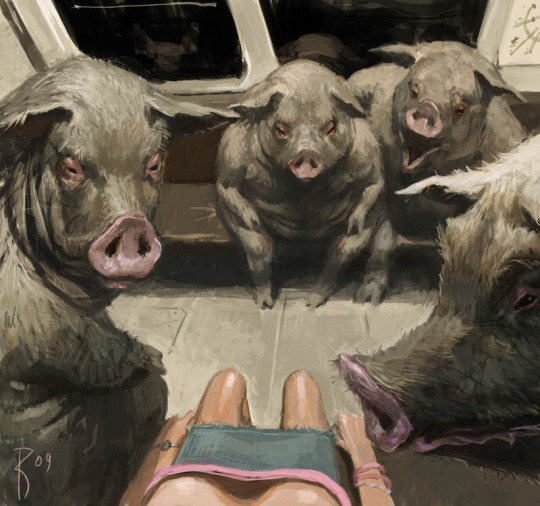
Art can be used for many things, no matter what it may be, we the viewers can have different interpretations. Depending on what may be the subject or the signs being depicted in the art, it can have many different meanings. In this case, I would like to look into the artist Waldemar-Kazak on DeviantArt, this specific piece was posted on April 6, 2009. They used a digital medium to create their work.
What can be understood at first glance from this piece, is presumably a woman who is being surrounded and stared at by pigs on the metro. By making the woman the center of the art, this places emphasis on her and also by using most of the colour in this piece on her clothing. In other words, her cute pink top with matching accessories and her denim skirt. This makes the viewer feel as if they were in her place while viewing Waldemar’s art. What adds to this is, when the viewer follows the eyes of each pig, they could see it leading towards the woman which also adds to the feeling of being preyed upon. Each of the pigs are drawn with a rough and hairy body that contrasts the smooth and almost delicate skin of the woman. Realistically, we wouldn't see pigs casually sitting on the metro with people, which is why we should interpret their presence metaphorically.
By looking at the context, it is basically saying men are pigs, to understand this we must understand the different signs shown. Such as the animals who are seated on the metro however, they show human behaviour by the way they sit and mannerisms. These animals are in fact imitations of the true object the artist is trying to portray. The way we can make this connection is, as I have mentioned before, is the way they all stare at the woman in the center of the image. Them being pigs indicates the animalistic nature of hunting down a prey. Just as how men shamelessly stare at women for their own self-pleasure like it was an instinct, such as a beast hunting to fill its belly. The pigs themselves look more like boars who are known to be more aggressive and have even killed people before. The ones in the image do not have tusks, or you can go as far as saying they might be hidden.
As a woman, it reminds me how no matter how docile a man may seem, they all pose harm to me. In everyday life, women are subject to verbal and physical harassment which are acted out majorly by men. We can effectively deduce the message being sent to the viewers, “you are not safe.” And how the artist puts into creation the quote “men are pigs.” I believe this was communicated perfectly in his art, from the unease I felt being stared at by these beasts to the melancholic atmosphere created by the lack of saturation in the palette.
Citations:
Kazak, Waldemar. Moscow Subway. 2009, DeviantArt, Russia.
https://www.deviantart.com/waldemar-kazak/art/moscow-subway-118374090
2 notes
·
View notes
Text
Mr deep fake

Mr deep fake software#
Mr deep fake series#
Sam Gregory from Witness, an organization that educates people on the use of videos and synthetic media in relation to human rights, has noted that some political figures and their followers have started claiming that real videos are deepfakes to avoid acknowledging wrongdoings or to maintain their desired narrative. Instead, the true risk that deepfakes pose to politics and public information is in what Robert Chesney and Danielle Keats Citron have coined the “ liar’s dividend.” Deepfakes cast doubt on real videos, allowing politicians to claim that a real video or audio recording of them doing something problematic is actually a fake. In a similar fashion, Bill Poster and Daniel Howe’s 2019 video project Spectre showed deepfake doppelgängers of Mark Zuckerberg and Kim Kardashian critiquing their own alleged misuse of social media data.Īs yet, the use of deepfakes by bad actors to purposely confuse the public is relatively low. Her videos, explicitly marked as fake videos so that there is no confusion, present individuals saying things that severely contradict their public personas.
Mr deep fake series#
Stephanie Lepp’s art series Deep Reckonings imagines controversial figures having a reckoning about their politics, past behaviours and ideologies. Both videos revealed onscreen that they were deepfakes and that their purpose was to educate the public of the potential misuse of deepfake technology.Īrtists’ use of deepfakes has also opened up a conversation about the ways in which people’s personal images can be manipulated and to bring attention to important social issues. During the 2019 UK election, Boris Johnson appeared in a deepfake by social enterprise Future Advocacy, in which he endorsed his opponent in 2020, Britain’s Channel 4 created an alternative Christmas message from the Queen in which she made uncharacteristic comments about her family and her position. In 2020, Sensity AI, an organization that monitors the number of deepfakes online, found that of the thousands of celebrities, public figures and everyday people who had deepfakes made of them, only 35 of these individuals were American politicians.Ī small number of deepfake videos featuring politicians have been intended to manipulate a political situation, but most videos of political figures have been used for parody or to educate the public about the role that deepfakes could play in spreading misinformation and disinformation. Political figures have certainly been the target of deepfakes however, the current risk of deepfakes directly influencing politics has largely been overstated. A study by Chandell Gosse and Jacquelyn Burkell found that media reports focused primarily on the negative use of deepfakes for these purposes, rather than on the harms caused by the non-consensual creation of sexual deepfakes, despite that being the most common use of deepfakes. Since that time, concerns about the misuse of deepfakes to manipulate elections, perpetuate fraud in business, alter public opinion and threaten national security have dominated the discussion about deepfakes.
Mr deep fake software#
In 2017, Motherboard journalist Samantha Cole reported that publicly available open source software made it possible for anyone with some programming skills and a decent graphics card to create these types of videos. Their initial popularity was fuelled by the non-consensual creation of sexual deepfakes of female celebrities. But many others are nearly impossible to distinguish from a real video and are not labelled as fakes. Some of these videos are clearly deepfakes, due to their low-quality visual effects, unusual contextual setting or the explicit acknowledgement that they are deepfakes. When done well, these realistic videos can be quite convincing, making a puppet out of the person featured in the film.įake videos have been made of politicians endorsing views contrary to their own, public figures confessing to wrongdoings, and women engaging in sexual activities they never engaged in. But the reality is that deepfake technology is predominately being used to create sexual videos of women without their consent.ĭeepfake videos are a form of synthetic media that uses artificial intelligence to swap out the faces of people in videos. Much of the public concern about deepfakes has centred on fears about them being used to disrupt politics or business. With the advent of deepfakes, viewers now need to question whether what they are seeing in a video is real or not. Deepfake videos have added to this confusion, sometimes presenting content that is meant to deceive the viewer or to drastically misrepresent the person in the video. In a culture that is rife with misinformation and disinformation, it can be easy for people to be duped into believing they are reading or seeing something that has no base in reality.

1 note
·
View note
Text
As we approach the anniversary of Heath Ledger’s passing, I would like to use my platform to discuss a few things I find increasingly important that we, as fans, keep in mind: Do NOT mock his death. Do NOT harass his family, friends, etc. (don’t ever do this, but especially not this week or the day of.) Do NOT use his death to signify your online presence. Those of us who appreciate this hard-working, loving, giving soul deserve the freedom of expression granted to us, given that we remain within the bounds of positivity, consideration for others and for Heath Ledger himself.

(image: Heath photographed for The West Australian on June 9th, 2001.)
I implore you to treat everyone with respect and to honor Heath in a way in which you would honor a loved one; be kind, courteous, respectful and tactful whenever you are discussing his passing and remain conscious of others and their feelings regarding this subject. It is a subject of sensitivity for many and I ask that you consider how others might feel when approached with the topic. Do NOT pass around photos of him that the paparazzi took on that fateful day. This is a blatant disregard for Heath and his privacy; He was unable to consent to having those photos taken, for obvious reasons, and I am certain that he would not have consented, given his distaste for the paparazzi and having felt as though his life was ‘on display’.
Remember to treat him and others with respect. It is the bare minimum of common courtesy when dealing with such a raw topic; Heath would be honored by how most choose to remember him and I think that he would be humbled by the legacy he’s left behind.
On another, more important note, we must to remember a few things regarding the late Heath Ledger:
He did not die because of his role as The Joker in ‘The Dark Knight’.
He did NOT die of a suicide.
Heath was struggling with insomnia, illness, his break-up with Michelle and (presumably) depression (though I don’t believe that was ever officially confirmed) at the time of his passing and we must remember how sensitive a subject this is, for his family, loved ones, friends and fans alike.
For more factual information on his passing, I recommend visiting these links provided:
Friends and Family Remember His Final Weeks
Some important quotes from this article to take into consideration:
“Gerry Grennell, Ledger’s friend and dialect coach who lived and worked with the star while he was shooting The Imaginarium of Doctor Parnassus in the final weeks of his life, spoke with PEOPLE in 2017 for a cover story on Ledger, nine years after the actor’s death. He recalled his friend being “exhausted, emotionally and physically” while battling a lingering pneumonia-type illness.”
“Grennell said the star’s mood was low. “He missed his girl, he missed his family, he missed his little girl — he desperately wanted to see her and hold her and play with her,” he added, referring to Ledger’s former girlfriend Michelle Williams and their then-2-year-old daughter, Matilda. “He was desperately unhappy, desperately sad.””
But in his final weeks, Grennell said Ledger knew he was spiraling. Still, he couldn’t stop himself from taking the pills. “He said, ‘I got to stop, it’s not helping, I’m not well, it’s making me feel more upset,’” Grennell continued. “It wasn’t helping with the relationship issues, it wasn’t helping with missing his kid, it wasn’t helping his sleeping — and he knew that.”
“Being such a social guy, having to be a bit of a hermit, or wear hats and glasses was super annoying,” he added, describing the lengths to which Ledger went to avoid the paparazzi. “His happiest I remember was times like when we were in Bondi on the beach catching waves, and nobody really looking his way, and when he moved to Brooklyn and could walk around with nobody bothering him.”
Heath Ledger’s Father Kim Speaks of Son’s Death - Trigger Warning: Kim Ledger mentions seeing EMS removing Heath’s body from his home in new York. This video and its message is EXTREMELY important; if you choose to view no other material listed here, please watch this short interview.
Statements Made by Heath Ledger’s Sisters
Heath Ledger’s Sisters Clear Up Rumors About His Death In New Documentary
Some important quotes from this article to take into consideration:
Though the doc doesn't elaborate on the "demons" that plagued Ledger's final days, it does change the narrative about his mental state at that time. According to the actor's family, Ledger's role in The Dark Knight didn't depress him, as so many tabloids had reported. It energized him."It was coming out that he was depressed and it was taking a toll, and we were going, 'What?'" Bell said. "It was the absolute opposite," Kate Ledger added. "He had an amazing sense of humor, and I guess only his close family and friends really knew that. But he was having fun. He wasn’t depressed about The Joker."
That's about as far as the film delves into Ledger's death. Instead, I Am Heath Ledger chooses to focus on his life. It may not be a complete picture of the actor, but after nearly a decade of rampant rumors and tabloid gossip, it's nice to see Heath through his own lens.
Speculation into Heath’s passing has been vast, leaving much to the media to exaggerate and perpetuate; there is very little evidence or proof that lends to the fact that Heath was an ‘addict’ as has been portrayed, however this statement can be found on his Wikipedia page:
“Ledger was "widely reported to have struggled with substance abuse.” Following Ledger's death, Entertainment Tonight aired video footage from 2006 in which Ledger stated that he "'used to smoke five joints a day for 20 years” and news outlets reported that his drug abuse had prompted Williams to request that he move out of their apartment in Brooklyn. Ledger's publicist asserted that some reportage regarding Ledger and drugs had been inaccurate.”
When discussing his death, please keep in mind that a large portion about his personal life has been over-exaggerated and therefore, research is key.
Heath’s private life is not something we should pry into and we should be respectful of the fact that we simply do not have the information to conclusively determine certain theories. It is among human nature to ask questions and want answers, but it is our responsibility to know what is appropriate and how we should go about researching such a topic.
Do not pry into Heath’s private life; be mindful of the information you choose to share and treat him as you would treat any other person. Just because he is a “celebrity” does NOT mean that every detail of his life should be public access. Treat him how you would want to be treated; you are not entitled to his private life, nor is anyone other than those he was closest to.
We have countless interviews and testimonies to his character from family and friends, those of which prove to be the most accurate.
Check out this video: Famous People Talking About Heath Ledger to hear some of these positive testaments to his character.
Drug abuse is a very serious matter; I do not condone Heath’s decision to abuse prescription drugs, nor should any fan; his death provides a testament to the dangers of prescription pills and we should remember to be mindful of their effect. Prescription drug abuse is a serious matter and we should not overlook the seriousness of it.
If you or someone you know is suffering from Opioid drug abuse, visit the link provided for the CDC’s help and resources
Please remain respectful while researching his passing and use discretion. Information perpetuated by the media has proved time and time again to be harmful to those in the limelight and Heath was a victim of that as well. Respect the fact that we do not know of his private life and accept that we do not have the right to know. There is a large amount of information present, providing speculation into this subject and I advise you to research with caution, as some of it is damaging to Heath’s character.
Most importantly, use this time to remember Heath for the incredibly gifted and talented soul that he was. As fans, it is important not only to understand his passing, but to keep his legacy alive through the ways in which we choose to honor and remember him.
Heath Ledger’s death was a tragedy. His family and friends still grieve his passing and his daughter, Matilda, is without a father due to his premature death. Please be respectful and courteous of this and honor Heath in a way in which he would be proud of.
Thank you for taking the time to read this lengthy post. With much controversy surrounding Ledger’s death, I felt it necessary to speak out on a couple of things, especially with the anniversary of his death coming up. Please feel free to add onto this post any way you would like, especially if you find more information that is factual and important to share within the community.
I will reiterate: BE RESPECTFUL. BE COURTEOUS. BE KIND. Do NOT harass his family and friends. Do NOT mock his death. Do NOT share offensive/upsetting images or media that is damaging to his character, now or ever. Respect others who choose to use this time simply to remember this wonderful man for all that he was and do not discuss his passing with anyone who might be triggered by the mentioning of it.
This community is a loving, caring and amazing place where we choose to remember Heath in our own ways and keep his memory alive through the creations and art we all share. Build each other up and listen to one another; treat each other as if you are looking at Heath directly and show the world the same kindness he showed while he was among us.
Thank you.
#heath ledger#tw: death#tw: suicide mention#tw: drug abuse#tw: drug overdose#tw: drugs#my stuff#okay to reblog#I triggered myself so bad to make this post please appreciate it and take it all into consideration
108 notes
·
View notes
Note
Would love to know your thoughts on the rutger bregman book when you finish it!!!
dearest merle! it took me months to answer this ask - something i'm ashamed of - but i finally got around to finishing the book today.
the below is a condensed version of the ten pages of notes i took while reading it, which are rather chaotic and repetitive at points - but in my defence, bregman repeated his own arguments too.
one of the main arguments that bregman makes is that "evil" or "immorality" - which we'll define as causing unnecessary harm - are rarely caused by the individual, but rather the society they live in. i agree - nothing exists in a vacuum. however, society, as a nebulous concept, isn't imposed on us by some imperceptible power - it is crafted by people. people in society have different levels of power, and the harm they can cause to others is directly proportional to said power - but be it on a micro or macro scale, our actions have an impact on others and while they are influenced by the society we live in, we must nonetheless strive to minimise the harm we cause - and few of us do.
bregman illustrates many of his arguments with heartwarming stories about people coming together in times of crisis - take, for example, natural disasters - and overcoming adversity, selflessly looking out for their neighbours. but crisis very often leads to the creation of divisions, an us vs them mentality, and a complete disregard for the safety of others. the current pandemic is a prime example - see the widening of class differences, the rise in racist hate crimes, and people refusing to take safety precautions because they are inconvenient to them.
another argument repeated quite often throughout the book is the fact that media cherry-picks the most sensationalistic and senseless acts of death and despair, because human suffering is simply more interesting that the mundane - people talking to friends, creating art, laughing and learning. again, i agree with him - many of the more tabloid-adjacent news outlets would have you believe that the everyday norm is dismembered heiresses being found on riverbeds and charming, precocious children being held for ransom in tiny basements. the news doesn't often focus on the mundane - but the mundane isn't just love and work and friendship and boredom and chores, it is also, for billions of people around the world, sexual violence, familial abuse, workplace and housing discrimination, etc. these things aren't sensationalistic either - they're frightfully common, frightfully boring, and thus, they're rarely reported on.
throughout his book, bregman mentions that when he told people what he was working on, they approached the idea that humans are good with a large dose of cynicism, simply because we are raised to believe humans are selfish (which isn't the case worldwide, not all cultures are individualistic). they pick the easier choice - accepting the image of the world and their fellow humans that they are presented with at face value. i'd argue that it is the tendency of humans to pick the easier choice, to obey, to avoid challenging their worldview that leads to - for a lack of better term - immorality (see definition in point 1).
often, when bregman presents his feel good stories about people cooperating in adversity, he also mentions troubling details that, again, show undue harm being done. one of the examples he used were six boys from tonga, aged 13 to 16, who were shipwrecked on an island, and instead of descending into a "lord of the flies" style madness, they built their small community on the basis of communication and cooperation, never resorting to violence, and acting mature beyond their years. after a year spent on the island, they were rescued - and promptly arrested, an event which was probably racially motivated. and the reason they were shipwrecked in the first place was attempting to flee their school, where, according to their reports, they were neglected.
bregman contrasted the example of the boys forming a peaceful society on a small island with the chaos that always ensues when adults in reality shows are put in similar situations. the contestants are pitted against each other by the show runners, who seek to frustrate them and make them lose control for the amusement of the audience. whenever contestants try to cooperate, form a mutually beneficial society for a short while - a radical idea - they are punished. "goodness" - i.e. harm reduction - and radical thought being punished just don't seem like particularly helpful examples for the "humans are inherently good" thesis
bregman seems to be a big fan of primitivism, constantly citing civilisation as a source of harm - a position i'm always sceptical about, because personally i love vaccines and dental care, but i know this is a knee-jerk reaction and bregman isn't plotting a return to a land without dentists. but what i do take ire at is the idea that humans are somehow "corrupt" versions of their natural selves and that our lives have grown too complicated, and only a return to "primitive" society can return us to the aforementioned natural selves.
tied to the previous point - his arguments remind me of the "noble savage"'... archetype? he seems to paint a picture of "primitive" indigenous people as role models for those "corrupted" by civilisation, who in turn must be saved by a return to their "purer" selves, instead of individuals with flaws and agency.
speaking on indigenous populations - bregman also invokes the inhabitants of the easter islands. for a long time, the world at large believed that a hundred years or so before colonization, the islanders effectively perpetrated a genocide, killing off a large proportion of their population - a claim which was later disproven. yay! humans can live in peaceful societies without committing genocide, and thus, are not inherently evil! disregarding the fact that european colonists later massacred a large part of the islands population, and sold most of the survivors into slavery?
i was very excited for one of the chapters, entitled "after auchschwitz". i was interested how bregman would reconcile his argument with the tragedies of the twentieth century - the holocaust, but also genocide, and to a lesser extent war in general.
(this chapter, i might add, was preceded by a quote by anne frank - you know the one, about the inherent goodness of people. i was hoping that bregman would comment on the fact that anne wrote the quote before she and her family were sent to a concentration camp)
so you can imagine my surprise when the chapter was not, in fact, about concentration camps or genocide. but rather about. unethical 70s sociological experiments.
no really! a chapter titled "after auchschwitz" was, in fact, primarily about the stanford prison experiment. an experiment that was, granted, inspired by concentration camps, but still. it's misleading to invoke "real", large scale violence, and focus instead on "simulated", small scale violence.
we all know that the stanford prison experiment was, as far as experiments go, rubbish to legendary degrees. it doesn't prove anything - but it does, perhaps, show that people under large psychological duress are capable of evil, even when they themselves are not "evil".
it is, i'd argue, the human tendency to obey authority and especially to conform to societies standards that poses the largest danger. disobedience is man's original virtue and whatnot.
and when he does briefly refer to concentration camps, bregman treats them like a very 1940s phenomenon, disregarding the fact that they have been around for much longer and still exist today.
in cases like that one experiment with electric shocks. you know the one. do not, perhaps, show an innate tendency to violence, but rather people succumbing to pressure. but history is full of unprovoked instances of violence, of pogroms and lynchings. there is usually an instigator, yes, but judging from reports, people in the right mindset don't need much persuading to butcher other people.
also re: electric shock experiment - those who thought they gave the assistant lethal shocks showed extreme guilt and some even cried but like... so what? what use is a conscience if it doesn't stop you from, to your knowledge, killing someone? are your feelings really more important than your actions?
he doesn't say this, but a lot of the arguments he presents do seem to boil down to "people aren't evil, they're just stupid!" which doesn't sound more encouraging, i'm afraid.
an alternative takeaway would be "people are good, unless they have power" - which isn't exactly a radical, revolutionary idea. most people have heard the maxim "power corrupts". but the thing is that almost everyone holds some amount power over others - the oppressed factory worker in a poor nation who works 12 hours a day for pittance might still execute power over his wife, who relies on him for money, and she in turn might hold power over her children, and so forth. and that power is often used to cause undue harm and exercise control.
he criticises machiavellianism, saying it doesn't reflect how society works, and one of his proofs is that his philosophies were espoused by bismarck, churchill, and stalin - hardly admirable figures in terms of (you guessed it!) causing harm. but i don't see how that discredits machiavelli? like all of the above were very succesful
and he keeps repeating the primitivism argument throughout the book which gets tiring. like i'm truly sorry you were born in the last 5% of human existence thus far when, in your opinion, humanity started going to the shits, but it's getting a bit tiring
he cites money and nations as concepts as harbingers of the current (negative) state of humanity, saying they're very recent concepts and have no basis in reality. they're artificial concepts, sure, but their effect is very much real, and while achieving a nation-less, money-less society is possible on a small scale, i think that at this point they are such large aspects of life that reigning them in seems impossible.
and invokes the noble savage again and again, showing himself in favour of tribal societies, depicting them as egalitarian - i'm sure many of them are, but many also have a strict hierarchy or like. practice fgm. once more he seems to treat tribal people as a monolith of goodness as opposed to... people.
he also cites prehistoric people, their egalitarianism and low rates of violence but. forgive me for my ignorance because i did not research this. how do people know. doesn't the definition of prehistory include a lack of records??
he also mentions that in small, tribal societies, conformism can be a good thing, as it makes people act for the communal good. this is another knee-jerk reaction of mine but i think of conformism as society's most significant vice, so this strikes very much against my beliefs
later on, he also says reproduction is another proof of humanities goodness. perhaps it's a controversial opinion, but i disagree. i find it hard to find reasons for reproduction that aren't egoistic. it's survival instinct, sure, but it's not an "inherently noble pursuit".
later yet, he brings up schools which grant large degrees of freedom to students and shows how they're good for developing their minds. this might be a me thing but i know from experience that when i'm granted freedom without structure, i do nothing - though perhaps that speaks ill of me, and not humanity.
there have, in fact, been many studies on schools like this being helpful to student development and i certainly won't argue with them - but let me nit-pick. bregman says that fewer students have adhd in these schools, as it is a condition caused by being locked inside a room all day which is not only offensive, but also just plain wrong
and also while showing how granting children freedom lets them develop (which i naturally agree with) he brings up that "dangerous playground" study. you know the one. this isn't a coherent argument, this is just my bias speaking , but as a child, i promise i had no desire to play with rusty nails in abandoned warehouses. i liked my boring playgrounds with wooden swings.
then there is a chapter on communism and how it could be a remedy to societies ailments. but bregman and i seem to operate on very different definitions of communism. he naturally starts with saying maoist china and stalinist russia and cambodia under pol pot weren't really communist which... sure, if you want to argue semantics, i'm all for it, but it's an old and essentially useless argument. if "real communism" has never been tried (as the author claims) - why?
and then we pass to perhaps the most bizarre fragment of the book. paraphrasing only slightly: "but why are we now so opposed to the word communism? when we pass each other salt at the dinner table, is that not communism? when we selflessly hold a door open for someone, is that not communism?" i.... no?? no it's not. that's not what communism is girl stop
he then also says facebook is actually communist in many ways since a lot of its value comes from photos people willingly share for free. i could not make this up if i tried.
i think that in most terms i agree with bregman on policy - direct democracy, school and prison systems, changes to the criminal justice system - and our reasoning is partially similar, but i don't think the information we both have access to proves that humans are inherently good.
and then come perhaps my least favourite arguments because i for one am a spiteful bitch but yes. it is time for christian ethics 101 and turning the other cheek.
he cites ghandi and mlk as examples of turning the other cheek working. i think ghandi went too far with his policy, what with saying "jews ought to have marched silently to their deaths or committed mass suicide to make nazis feel ashamed" and like. we do remember they killed mlk, right?
as an example of turning the other cheek, he cites humane prisons in norway, where prisoners are granted much larger freedoms than usual and are on equal footing with the guards, who aren't armed and act more as councillors. i don't really see how this is an example of turning the other cheek, though - the guards are not the victims of the inmates (it was a prison for violent offenders - many of them murderers). i agree with him that prisons, if they must exist, should treat inmates humanely and with respect, but i don't see how this relates to the turning of the cheek. statistically, many of these men probably murdered their mates in a drunken dispute, or killed their wives - and i don't think turning the other cheek would have helped their victims.
he also cites south africa in the sixties as an example of turning the other cheek, when anti-apartheid activists would meet up with pro-apartheid activists and talk - this included nelson mandela who had frequent talks with the leader of a white supremacist paramilitary organisation of afrikaners staunchly opposed to black south africans getting the vote. and it worked - the man, whose aim was starting a civil war, relented. but racism isn't a simple matter that can simply be solved by talking. and it is often a pragmatic policy which i don't disparage, but turning the other cheek and having to treat someone who refuses to acknowledge your humanity with an exorbitantly disproportionate amount of respect is inherently degrading.
skipping ahead, in the epilogue bregman lists ten rules he tries to live by, and one of them is, i shit you not, "don't punch nazis". and punching nazis doesn't stop them from being nazis, but turning the other cheek gets people killed
the rise of fascism is perhaps one the largest threats we are dealing with and fascists are not just isolated and misinformed (and in this day and age, ignorance is a choice). they are dangerous.
this is by no means an essay or an exhaustive list, just a slightly chaotic and much overdue collection of opinions which i don't know how to put under a read more. take care <3
23 notes
·
View notes